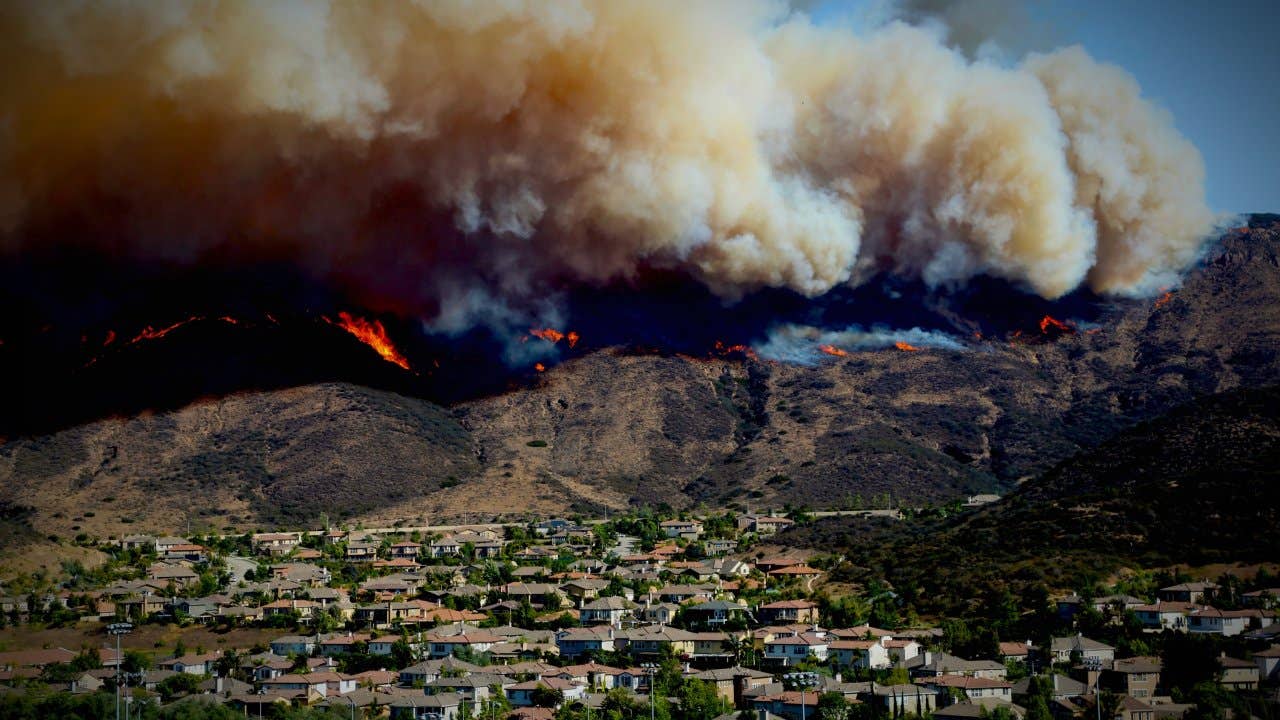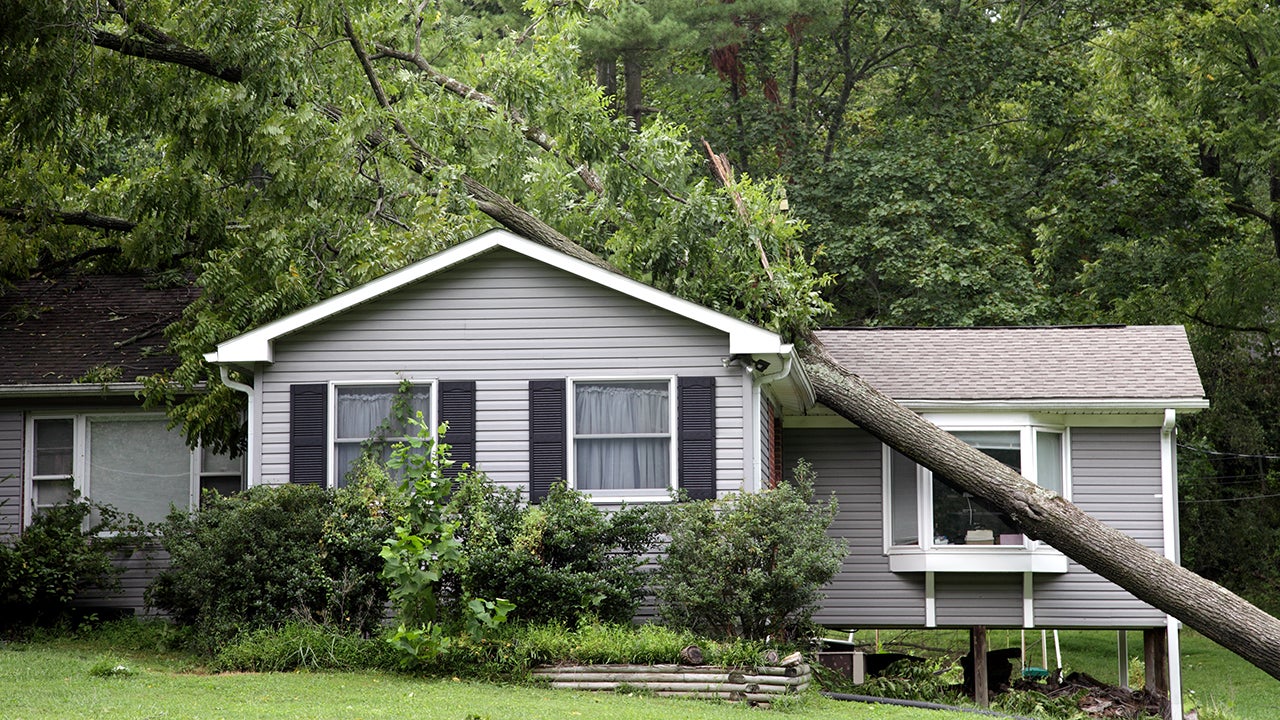Safety tips for homes in wildfire areas

Every homeowner wants to protect their family and home from the devastating effects of home fires. Unfortunately, there’s an average of almost 350,000 home fires every year.
Of those, wildfires are particularly destructive. Over the last five years, close to 300,000 wildfires (an average of 60,000 a year) have burned more than 400 million acres of land. More than 21,000 wildfires have already been recorded in the first four months of 2022.
Homes in certain wildfire-prone states, and in designated wildfire areas, face the greatest risk — and need to take special precautions. Here are some safety tips for those in those fire zones.
Where are the greatest wildfire risks?
The state most at risk for wildfires is California. In 2021, California had 9,200-plus wildfires that burned more than 2.2 million acres. Rounding out the top five states for the most wildfires: Oregon, Montana, Washington and Arizona.
Families living in designated wildfire areas face an even greater risk than the average homeowner. Designated wildfire areas are places that are more susceptible to the impact wildfires have on human lives, development and communities. By these standards, the most dangerous states for wildfires are California, Texas, Colorado, Arizona and Idaho, where up to 26 percent of all housing units are at risk for wildfires.
In the past, wildfire season was typically four months, June through August. However, as climate change, droughts, tree mortality and previous fire suppression policies, which allowed fuels to accumulate, have taken hold, wildfire season now often lasts six to eight months.
Fire safety rules and mandates
Some areas where wildfires are more prevalent have specific fire safety laws to address these risks. For example, the state of California has identified Fire Hazard Severity Zones (FHSZ) that rate the level of wildfire hazard as moderate, high or very high. Beginning in 2021, all homes sold in a high or very high FHSZ were required to be compliant with Defensible Space inspections. Defensible space is a buffer created between your home and the trees, shrubs and grass around it, to cut down the fuel wildfires consume.
The fire safety laws in some communities limit the type of construction materials that can be used, such as shake roofs and certain types of siding or fencing. Additionally, many communities place limits on when you can burn leaves or use your fire pits.
Ways to protect your home from fire
Similar to California’s Defensible Space zones, the National Fire Protection Association (NFPA) has identified three home ignition zones (HIZ) around houses. The immediate zone extends five feet around your house. This is the most important area in which to turn your fire preparedness steps. The intermediate zone extends from five to 30 feet around your house, while the extended zone runs from 30 to 100 feet around your home. Maintaining your home and property in these zones can help reduce the risk of wildfires to your home.
Many people believe the most common cause of homes being burned down in wildfires is the wall of flame that consumes the area. However, this is not true. In fact, the Insurance Institute for Business and Home Safety said 90 percent of the time, wind-blown embers are the cause of homes burning from wildfires. These embers can be carried by the wind as much as a mile from the source of the fire. This greatly increases the number of homes that could be in harm’s way.
Fire safety protective steps to safeguard your home:
- Removing dry leaves and pine needles from around your house. Be sure to include your gutters when removing these materials.
- In your landscaping, replacing wood chips with gravel will add another layer of protection.
- Move piles of firewood away from the house. It’s best to keep that source of fire fuel at least 30 feet away.
- Keep your lawn mowed and, when and where allowed, water it so the grass doesn’t get too dry.
- Keep your trees pruned, removing low-hanging branches so they’re at least four feet above the ground.
- Install screening on the vents for your attics or crawl space. This will prevent lawn debris from blowing into your home.
Additionally, there are steps you can take to safeguard the interior of your home.
Behavioral fire safety and fire prevention
In addition to protecting your home, it’s important to know what you should do in the event of a wildfire. This includes developing an evacuation plan so every family member knows escape routes out of the house. If you have pets, someone should be pre-designated as being responsible for getting each animal. Schedule fire drills so each family member can practice their escape routes.
You may also want to pack a safety bag with clothes and other essential supplies in case you need to make a hasty evacuation.
In addition to fire preparedness steps, it’s important to check whether fire is a covered peril on your homeowner’s insurance. However, as the number of wildfires has increased and the cost of claims have gotten more expensive (from 2015 to 2019, the average insurance payout for a fire-related claim was close to $80,000), many insurance providers are no longer offering fire coverage in the states most susceptible to wildfires. In these states, in addition to your standard homeowner’s policy, you may need to purchase a separate fire insurance policy.
Final word on wildfire safety
Over the years, the effects of wildfires have become increasingly more devastating. Every homeowner should have a plan on what to do in the event of a fire, but for people living in designated wildfire areas, it’s even more important to take extra steps to protect your family and home from one of nature’s most destructive elements.
You may also like

Will tree damage be covered by your home insurance?

Tips for first-time car insurance buyers

How to protect your home from wildfire



